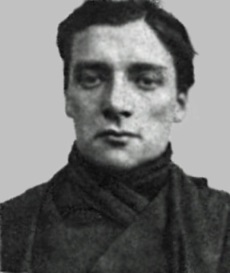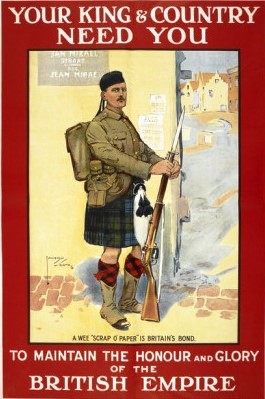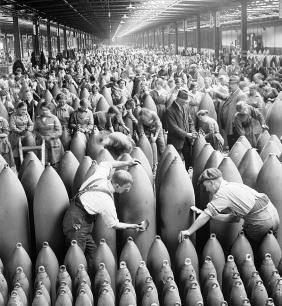charles christopher mellidine + emily jane morgan
Charles was born in Limehouse on 1 August 1894 to Charles Mellidine and Lydia Grandy and baptised at St John the Evangelist on 22 August. At the time of his baptism, his family was living at 7 Dan Row in Limehouse and his father was working as a Labourer, likely on the nearby docks. On 20 June 1898, Charles was admitted to the Halley Street School which was not far from his family home on Taylor’s Place.

c. 1921
Charles’ parents were living in 1901 but neither he nor his siblings were living with them and they have not been found elsewhere. In 1911, Charles, was living on the reformatory ship the Cornwall that was moored on the River Thames at Purfleet in Essex. Reformatory ships were sanctioned by the government but operated by charitable organizations that wanted to offer an alternative to the adult prison sentences handed out to young offenders. They primary focus was on providing occupational training for the young boys with a focus on naval training for a career in either the Royal Navy or the Merchant Navy.
Initially, the reformatory ships only accepted boys between the ages of 11 and 14 who had been committed to detention for three years or more but later some voluntary admissions were accepted. There is no record of a criminal charge against Charles so it is not known what actions caused him to be on the Cornwall.
But the training he received enabled him to get a job as a Cook on a merchant ship. One month after his 20th birthday, he was in Leven, a seaside town on the coast of the Firth of Forth, in Scotland when he enlisted as a Private in the Black Watch. He was described in his attestation papers as being 5’ 4" tall and 108lbs with dark brown hair, grey eyes and a fresh complexion. His father was listed as his next of kin and his address was given as 88 Clarkson Street in Canning Town. One of the questions on the attestation paper was ‘Have you ever been sentenced to imprisonment by the civil power?’ and Charles answered no.
He was posted to the 8th Service Battalion of the Royal Highlanders regiment on 31 August 1914 and began his training but only 41 days later, he was discharged under Paragraph 392 (3) of the King's Regulations as one ‘not being likely to become an efficient soldier’. His attestation papers do not list the reason for the discharge but under this regulation, most men were discharged either for medical reasons or because the commanding officer did not believe they had the right skills or temperment to be a good soldier.

But Charles was determined and on 28 October 1914, he joined the 7th Fife Battalion of the Royal Highlanders and this time he was not rejected. He was assigned to C Company and fought in France and Belgium until he was wounded on 24 September 1915. He is mentioned in the War Diaries for his company but these have not yet been consulted for information on his service or the circumstances leading to his injuries. However, on 8 August 1916, Charles appears in a list of soldiers from Scottish regiments that were transported from France to Glasgow and the soldiers from his regiment were sent to Bellahouston Red Cross Hospital. It is unlikely that he remained in France for almost a year after his initial wounds so he may have have been injured twice and the second injury sent him home. Unfortunately, the service record from his second enlistment, under service number 2929, has not been found and may have been one of the many that were destroyed by fire during the Blitz.
Charles was discharged from the army on 4 April 1917 as he was no longer physically fit for service and one month later he was awarded the Silver War Badge which was issued to service personnel who had been honourably discharged from military service due to sickness or wounds. In 1919, Charles was awarded the 1914-15 Star, the British War medal and the Victory medal; the Star was awarded to soldiers who fought in Europe before mandatory conscription while the British War and Victory medals were issued to all soldiers who fought for a proscribed period between the declaration of war and the armistice of 11 November 1918 although it was later extended to cover post-war service.
Charles returned home after his discharge and in the fall of 1919, he married Emily Jane Morgan in West Ham. Emily was born in West Ham in 1902 to Henry and Susan Elizabeth Morgan. Her father was away at sea, working as a Ship’s Fireman, when the census was taken in 1911 but his wife and children were living at 60 Portland Road near the Royal Victoria Docks.
Shortly after their marriage, Charles was back at sea on a cargo run between London and New York on board a ship called the Vasconia operated by the Cunard Line. Charles and Emily had four children and their first son, Charles C, was born in the spring of 1920 in West Ham followed by daughter Mary E in the early months of 1922. Charles appears in another passenger list in 1923 on board the Loriga, owned by the Pacific Steam Boat Navigation Company, that sailed from Callao, Peru and arrived in the US on 23 November.
Emily Beatrice was born on 11 April 1924 in West Ham and Henrietta Elizabeth was born on 18 April 1926. Charles continued to work as an Able Seaman and appears in various passenger lists throughout the 1920s and into the early 1930s but it appears that family circumstances ended his career at sea. In the spring of 1933, thirty-one year old Emily Jane died in West Ham leaving four children aged seven to thirteen years.

c. 1940
In 1939, Charles and his three daughters were living at 45 Roscoe Street, now called Ruscoe Road, in Canning Town and he was working in a heavy munitions plant. His nineteen year old son, Charles, was not with the family and hasn't been found elsewhere in the 1939 Register however, enlisted men did not appear in the register so if he joined the army like his father, there would be no record of him. Only three years later, his son Charles died in West Ham aged 22 years.
In the fall of 1946, the first of their three daughters, Mary, left home to marry James Cowman. James was born on 6 April 1913 in Woodford and in 1939, he was living at 46 Maybank Ave and working as a General Labourer on the railway. Mary and James had one daughter. James died in Waltham Forest in 1979.
Henrietta married Walter Charles Cable in West Ham in 1948 but it does not appear that they had any children. Emily married William Love in West Ham in 1951 but no children of the marriage have been found. Henrietta died in Newham in 2000 and Emily in the City of London in 2006.
Charles never remarried and in the 1960s he was living at 32 Maybank Road in Woodford, Essex. On 28 January 1977, he died aged 82 years at the Langthorne Hospital in Leytonstone from broncho-pneumonia and epilepsy. Prior to his death, he was living with his daughter Emily and her family on Hughes Terrace in Canning Town.